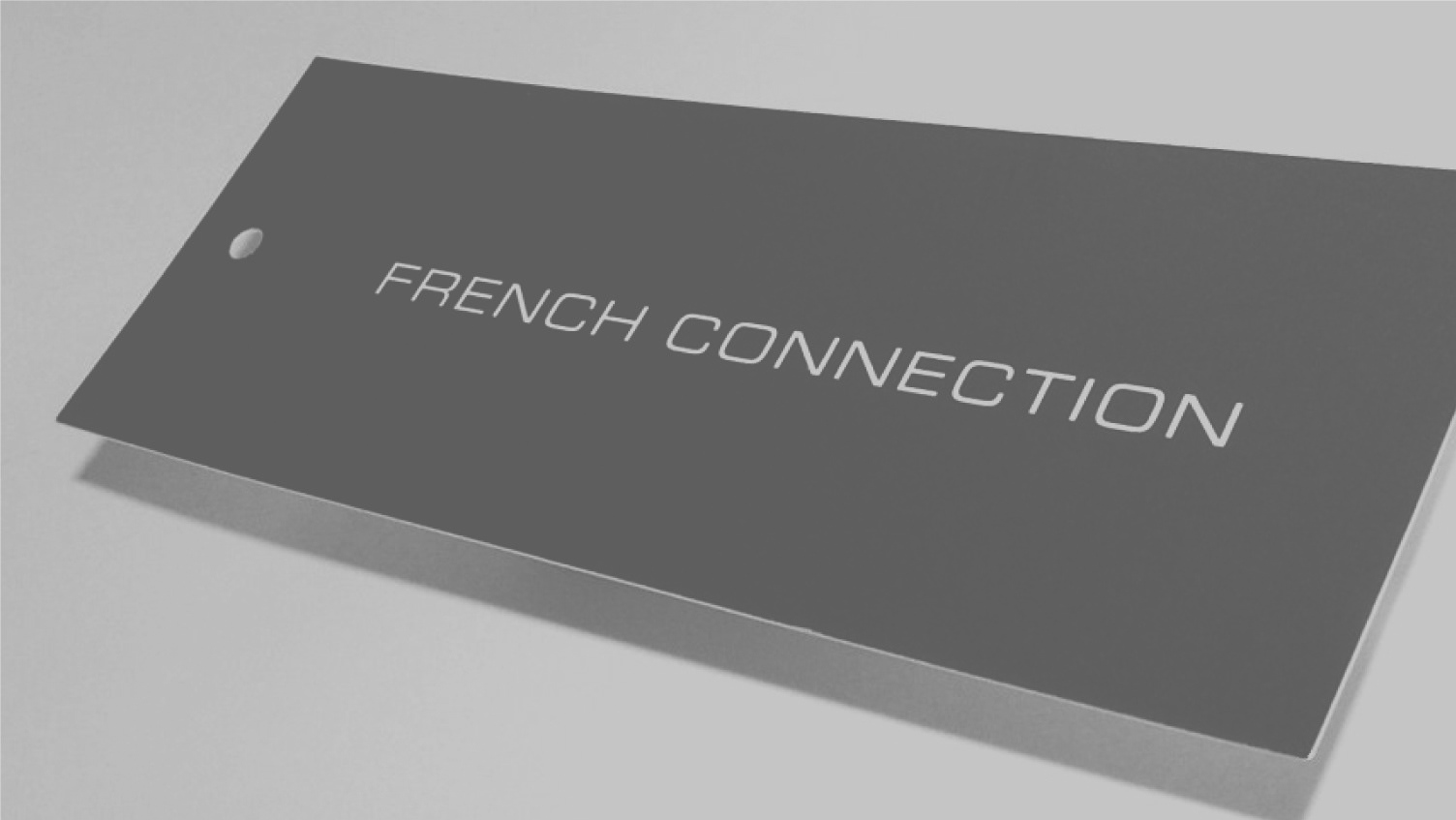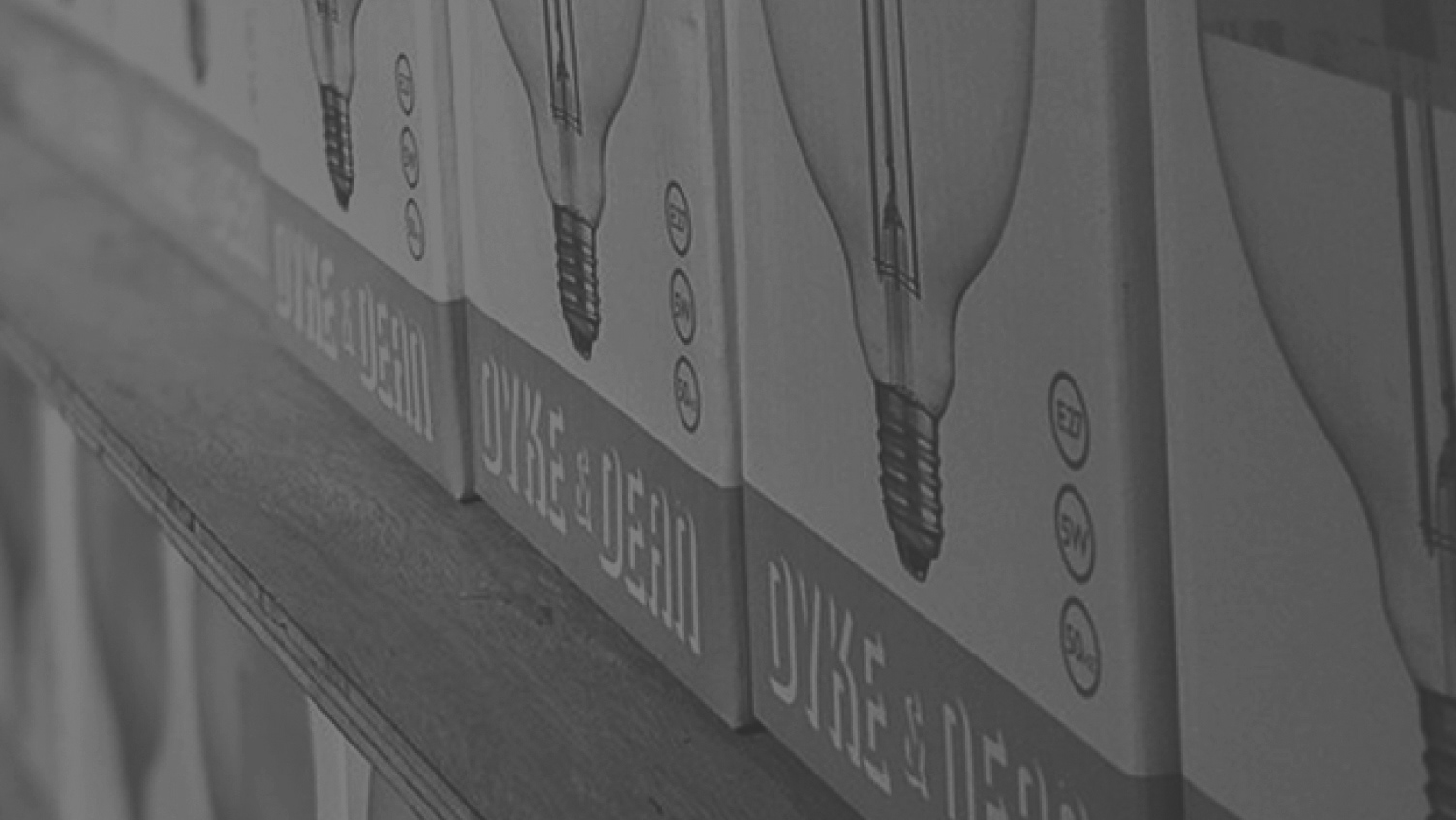Case Study - French Connection
Packaging underwear with innovation and ethics.
One of my first ‘big’ in-house design jobs was working with the fashion brand French Connection as their in-house graphic designer. A pet project was the development of new underwear packaging, something I’d already looked at as a freelancer for the same company a few years previously. At that time we were thinking about clear plastic zip-lock cases instead of disposable packaging. It worked for some pieces but only in limited sizes and frankly, wasn’t going to happen. I’d been thinking about the problem for a couple of years and had already devised my own solution — it took about a year to get everyone else on board internally and a bit of a push to the group chairman (I basically wrote a begging letter) but eventually I got the go ahead.The solution was to use cardboard tubes. My thinking was that they were robust, cheap, biodegradable and resolved a number of tricky issues with underwear packaging. They are very forgiving, you could just cram the product in without complex folding. They were tough and didn’t crush. They stacked, the product could be updated easily and looked great and they had A LOT of shelf appeal. French Connection was about style, innovation, smooth clean lines and quality and these seamless tubes seemed like a perfect fit.
We were also able to customise simple bathroom cabinets as display units, with routed-out shelves to make walk-around displays. We went for two sizes and developed both men’s and women’s products in black or white. The detailed communication (sizes etc) was a simple end card so the main tubes could be created in bulk with just images of the styles worn by models. The shoot went well and preparing the images was straightforward, as were the artwork and logistics. There had been questions about the shape, a round tube takes up more space in transit than a square box when packed, but the rigid form performed so well that there was no wastage through crushing or impact damage. Even, in-store the packaging proved to be crush and bounce-proof.
One unexpected advantage was the customer, They were so popular and visually engaging that customers would subconsciously tidy the shelves for us, lining up the tubes themselves. That old problem of customers opening a pack and then buying a pristine carton vanished — all the packs could be re-sealed and re-packed by staff so there were no spoils. In the end, the range performed incredibly well and was still in store for many years after I left the company. For me, it wasn’t just about creating a great product, I was making something as robust, economical and ethically sound as I could. Nobody wants to see their work in the bin (which is what happens to all packaging ) but customers were happy to tell us they kept theirs intact, either repurposing (a LOT of pencil cases) or using them as storage, The customer base was young, free and single and happy to tell us they made ideal accessories for the walk of shame. There was less wastage in production, logistics, retail and post-purchase. They were, admittedly slightly more expensive than off-the-shelf boxes but the product was already high quality and premium (wouldn’t have worked otherwise) so overall costings were very good.
I was lucky that I got support internally and very little interference during design, prototyping and artwork and the shop managers were happy (always a make or break in fashion retail) so overall — a big win for me professionally and personally. The right product in the right delivery system that truly understood who the customer was, how they shopped and how they lived their lives.
Years later I did a small piece of research for Habitat. They were frustrated by customers looking through the stock of small linens and bedding, opening packages to feel the fabric, discarding the spoilt pack and either leaving the store or buying an unopened product, so wastage and markdowns were a huge problem.
When I reported back, my suggestions were to have loose products or samplers at hand level and move the packaging above into easy-to-navigate custom units, so two ‘choice’ experiences, and move the sales area to spaces where customers could be observed, they were currently hidden in corners where furtive hands could open as many packs as they wanted unobserved. My thinking was that once they had made a decision with the loose product, they could make the decision to select from a library of sealed packs without the need to investigate further.
Habitat disregarded my advice, in truth, what they really wanted was an over-designed pack with flaps and holes to ‘feel’ the fabrics, which didn’t work at all. Basically, they didn’t think it through. I hate waste. Understand WHY it happens rather than trying to design around it. Respect the product and the customer, don’t make assumptions and don’t shove stuff in dark corners because it isn’t sexy enough for your brand. Work the problem, guys. Work the problem.






